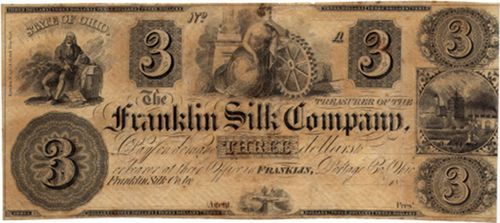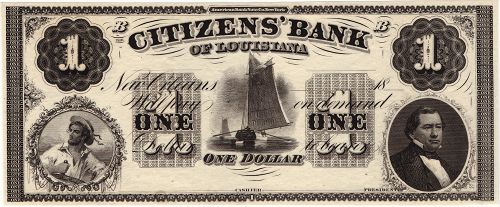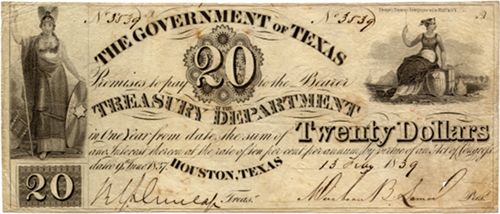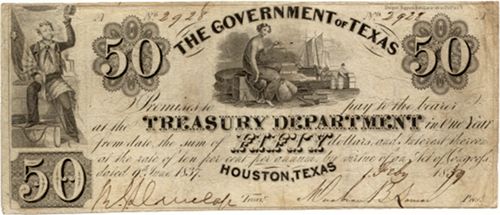By:
Handini
The Bank Of Cape Fear, NC (headquartered in Wilmington) is one of the more popular banks from which to collect banknotes. It operated from 1804 to 1866 and had branches throughout the state of North Carolina. It was one of the first banks to have branch banking.
There are many options with regards to collecting notes from this bank. Many of the earlier notes are hard to find and
contemporary counterfeits do exist. The later notes from the 1850's and 1860's are beautiful and many contain red ink as well. Some also contain the intricate lace work as seen in the $6 note listed below. A more challenging option when collecting is to develop a set of notes from an individual branch or from all of the branches. One could even collect a specific denomination from all branches if desired. Either way, notes from this bank have a lot going for them and their prices have soared in the past few years. To sum up the investment potential from this bank, the bank has a desired name, (most likely due to the movie
Cape Fear), it offers many beautiful varieties and vignettes, it is one of the most popular broken banks from which collectors seek out currency.
$3 Bank Of Cape Fear, branch at Salem NC (1859)
The dealer I bought this note from had it advertised: "As
Good As This Note Gets" and I haven't seen a nicer one yet.
$3 Bank Of Cape Fear, branch at Wilmington (1860)
$4 Bank Of Cape Fear branch at Salem (1859)
$5 Bank Of Cape Fear branch at Washington (1851)
$6 Bank Of Cape Fear branch at Salisbury (1858)
$7 Bank Of Cape Fear (Proof)
$8 Bank Of Cape Fear (Proof)
$9 Bank Of Cape Fear (Proof)
Note: Due to the mutilated condition of this note,
I kept it in it's sleeve and took a photo rather than a scan.
$10 Bank Of Cape Fear branch at Washington (1851)
$10 Bank Of Cape Fear branch at Washington (1853)
I find the Salem branch intriguing but that will be another entry at a later date. I also have a
couple more Cape Fear notes to scan so check back and I should eventually have them uploaded.



























